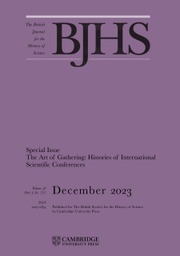Hannah Halliwell’s Art, Medicine, and Femininity maps out a new visual culture of morphine addiction that emerged in 1880s Paris. Beginning with Georges Moreau de Tours’s 1886 painting La Morphine, Halliwell constructs an analysis of the visual language of the morphinomane, the morphine addict, demonstrating how, in almost all artistic representations, the morphine addict appears as a fashionable, decadent, eroticized female figure. Although contemporary medical statistics demonstrated that addicts were both men and women and that most became addicted via medical prescription, artists almost exclusively depicted morphine addicts as pleasure-seeking women, creating an image of the morphinomane that obscured the realities of drug addiction in the late nineteenth century.
Amid widespread concerns over depopulation and degeneration following the Franco-Prussian War of 1870–1, women who appeared to reject traditional domestic and maternal roles were blamed for compromising the demographic future of the nation. Historians of drugs have long observed that the construction of the morphine addict as a symbol of deviant femininity reflected broader anxieties over the decadence and degeneration of fin de siècle France. Halliwell contributes a new layer of visual analysis to these debates, arguing, ‘Morphinomane artworks are a key facet in the kaleidoscopic crossing of textual (mis)information on morphinomanie’ (p. 18).
The first chapter examines a single painting – Moreau de Tours’s La Morphine, which played a foundational role in establishing the visual culture of morphine addiction in art. The second explores the tropes used by artists to depict morphine addicts, including heavy make-up, large eyes boldly staring out toward the viewer, a vacant expression, fashionable clothing, and settings and postures indicative of ‘problematic femininity’ (p. 59). As aesthetic conventions made artists reluctant to depict the disfigured skin associated with morphine addicts in medical texts, they instead portrayed the morphinomane with unblemished skin while highlighting the figure’s outstretched arm. Halliwell argues that this emphasis on the arm, combined with the other tropes, produced a ‘new visual language’ of morphine addiction, even in paintings that did not include morphine or a syringe (p. 46). Less clear is how legible this new visual language would have been to the average viewer. With the exception of Hermenegildo Anglada-Camarasa’s painting Le paon blanc (Plate 2), all of the morphinomane artworks analysed in the book either depict morphine injection and drug paraphernalia or mention morphine or morphine addiction explicitly in their titles or captions.
The third chapter analyses how the figure of the morphinomane was feminized in artistic representations, with addiction framed as both fashionable and contagious, playing into contemporary anxieties about the decadence and excesses of the female consumer. Chapter 4 notes the exclusion of male physicians from the visual culture of morphinomanie, as artists wanted to depict morphine addicts as pleasure-seeking women rather than patients, even though medical prescriptions were a major source of morphine addiction in fin de siècle France. On the rare occasions when medical professionals were depicted in caricatures of morphine use, these images served as a rare critique of the doctor’s role in spreading addiction among his patients. The fifth chapter returns to the discussion of the gendering of the morphine addict from Chapter 3, this time examining the connections between artistic depictions of the unconventional lifestyles of female morphine addicts, lesbians and the emerging social archetype of the femme nouvelle – the New Woman, the single, independent woman who challenged traditional gender norms in fin de siècle France. As morphinomanie was reputed to harm women’s reproductive capacity, critics vilified the morphine addict alongside the New Woman for failing to embrace the duties of motherhood at a moment of heightened concern over France’s declining population.
The last two chapters explore how newspapers and artists exploited the sensationalism of morphine addiction as a subject matter to boost sales. Examining medical texts and popular newspapers, Chapter 6 maps out how authors blurred the boundaries of fact and fiction to sensationalize writings about morphine addiction with attention-grabbing titles and images designed to spark readers’ curiosity. The last chapter demonstrates how artists stylistically reinvented the subject of morphinomanie through exaggerated colours and the shock value of depicting an exotic and erotic bohemian underworld in Montmartre to market their art and promote themselves as artistic innovators. After a brief conclusion, Halliwell ends the book with an epilogue on images of narcotics in the photography of the 1930s to demonstrate how these new visualizations of the morphine user – often eroticized images of women injecting morphine into their thighs – were rooted in the earlier visualizations of hedonistic women explored in the book.
Halliwell’s Art, Medicine, and Femininity provides an exhaustive analysis of the visual culture of the morphine addict in the early Third Republic; however, its thematic organization leads to repetition at times. The visual aspects of the book compliment the text well, with twelve vibrant colour plates and thirty-eight black-and-white images, depicting the range of morphinomane imagery in the fin de siècle. While the bibliography is selective and is missing several sources cited in the notes, the book has an index that will be useful for researchers. Halliwell’s meticulous analysis of artistic representations of addiction is an important work of art history and makes a compelling case for scholars of drugs and addiction to further explore the visual dimensions of their subjects.



